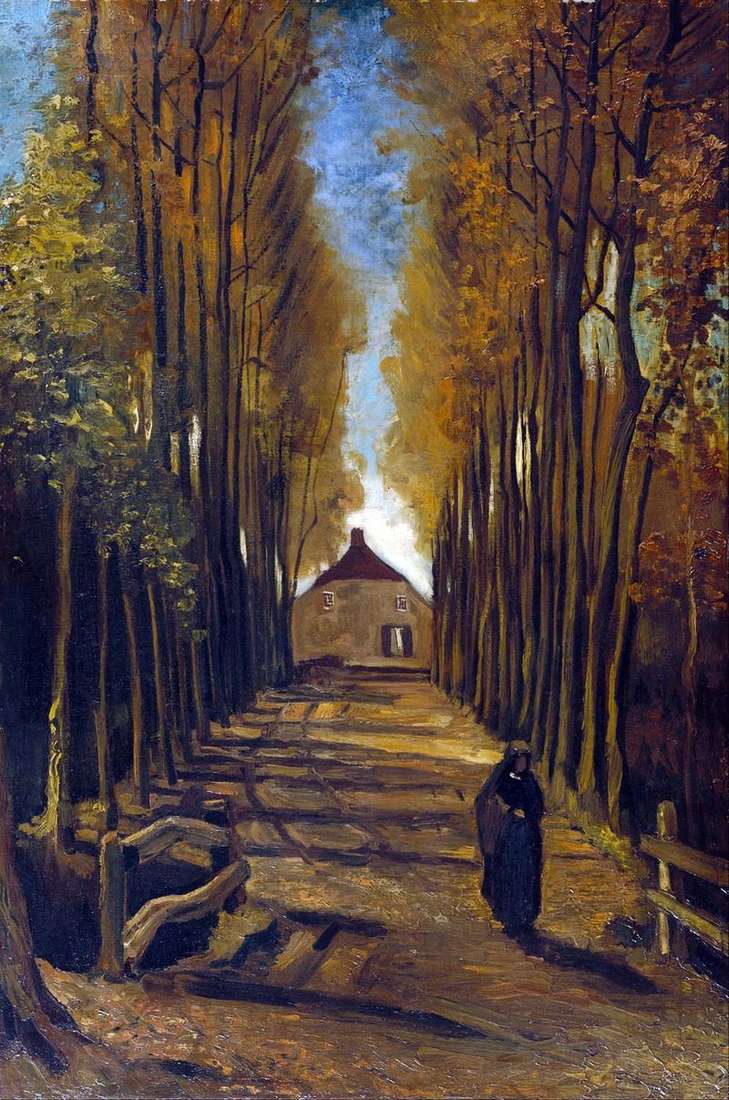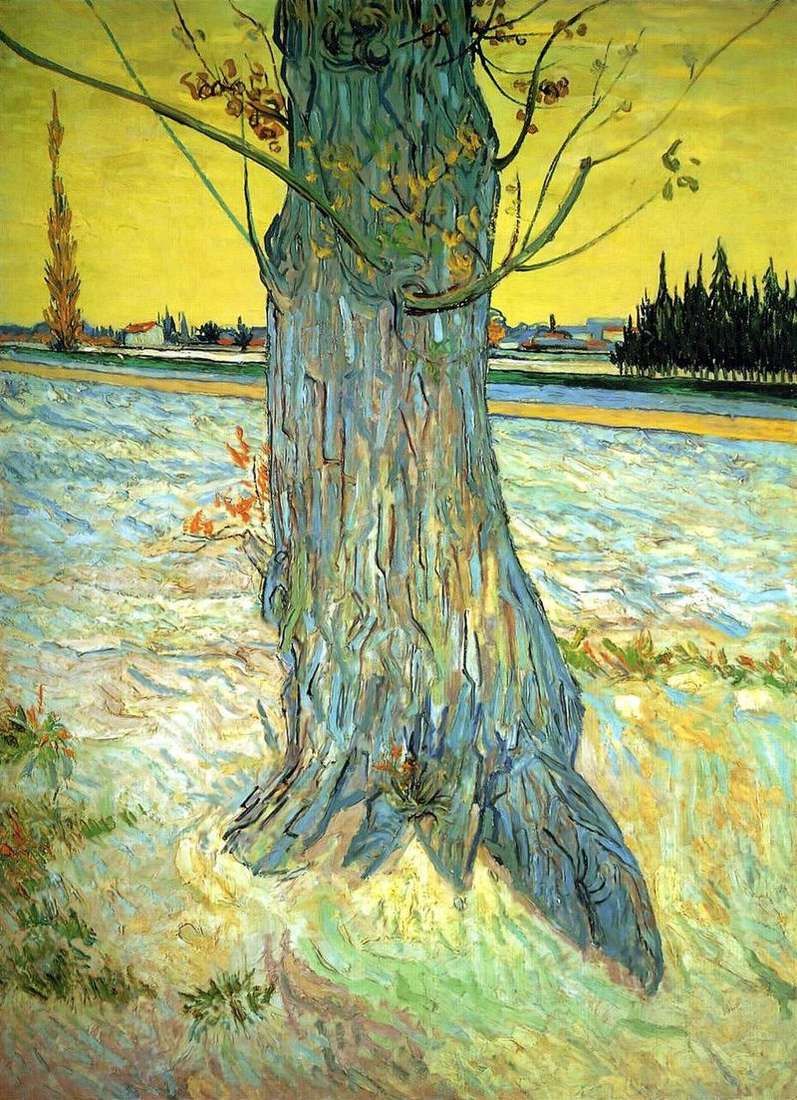
This picture was written in late October 1884. As Van Gogh wrote in a letter to his brother, autumn was unusually beautiful that year. The artist was very fond of this time of year. He said that he dreams to go to a land where there would be an eternal autumn.
On a canvas of a rather large size, Van Gogh painted a poplar alley that stretches far into the distance. Symmetrical closed composition creates a mood of solemnity and visually increases the height of poplars. An even structure of trees leads to a small peasant house, visible at the end of the alley. To the right of the house, in the foreground, Van Gogh depicted the figure of an unknown woman dressed in a black dress. Her sadness strengthens the general mood of sadness, which is different from this picture.
Black is also written and deep long shadows falling to the ground from the trees. But the upper part of the canvas is dominated by bright, much more joyful tones. The bright blue color of the sky contrasts with the rich yellowness of the crowns. Sunlight flashes on the fallen leaves and on the ground along which the woman walks.
Combining the mood of sadness and joy in one canvas, the artist tried to convey the mood of autumn, when the inevitable withering of nature is accompanied by a splash of her beauty.
 Autumn leaf fall, walk by Vincent Van Gogh
Autumn leaf fall, walk by Vincent Van Gogh The Plane Alley by Vincent Van Gogh
The Plane Alley by Vincent Van Gogh Parish Priest’s House in Nyuenen by Vincent Van Gogh
Parish Priest’s House in Nyuenen by Vincent Van Gogh Street with plane trees near Arley station by Vincent Van Gogh
Street with plane trees near Arley station by Vincent Van Gogh The way out of the Protestant church in Nyuenen by Vincent Van Gogh
The way out of the Protestant church in Nyuenen by Vincent Van Gogh Alley in the Park d’Argenson in Asnieres by Vincent Van Gogh
Alley in the Park d’Argenson in Asnieres by Vincent Van Gogh Les Alyscamps by Vincent Van Gogh
Les Alyscamps by Vincent Van Gogh The trunk of the old yew by Vincent Van Gogh
The trunk of the old yew by Vincent Van Gogh